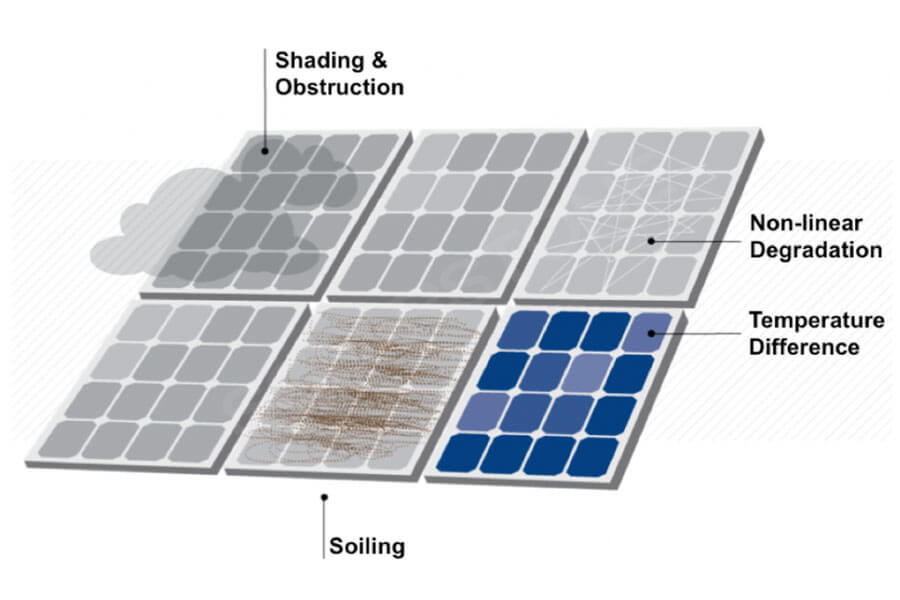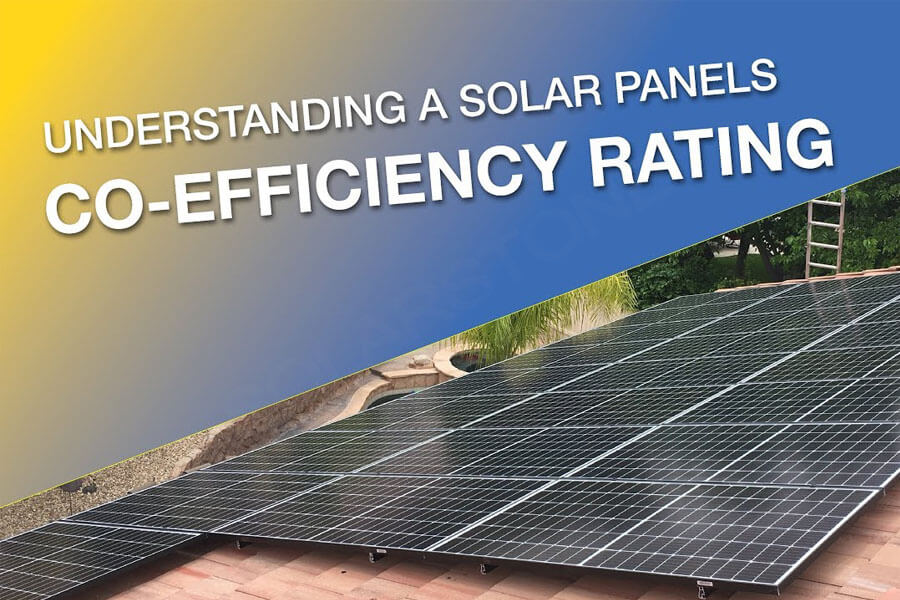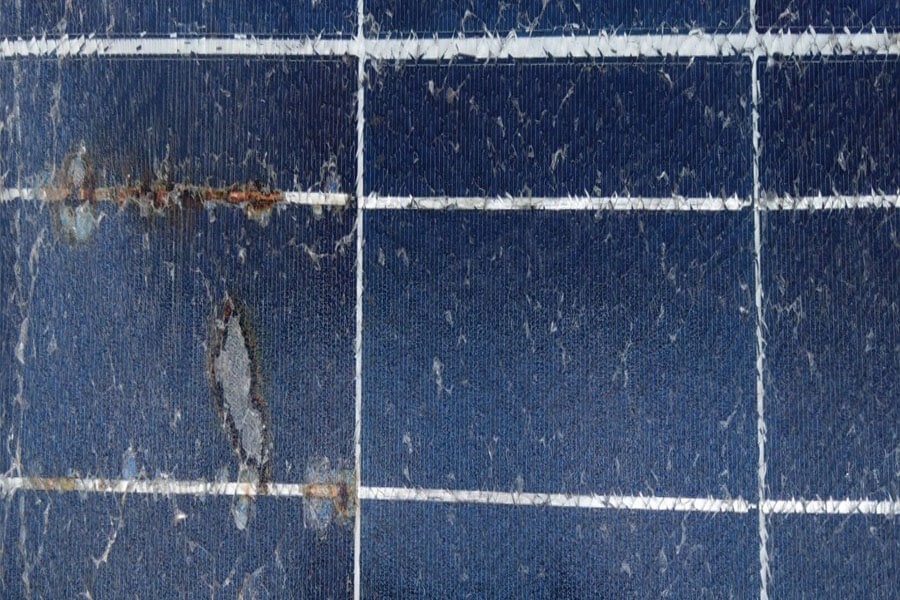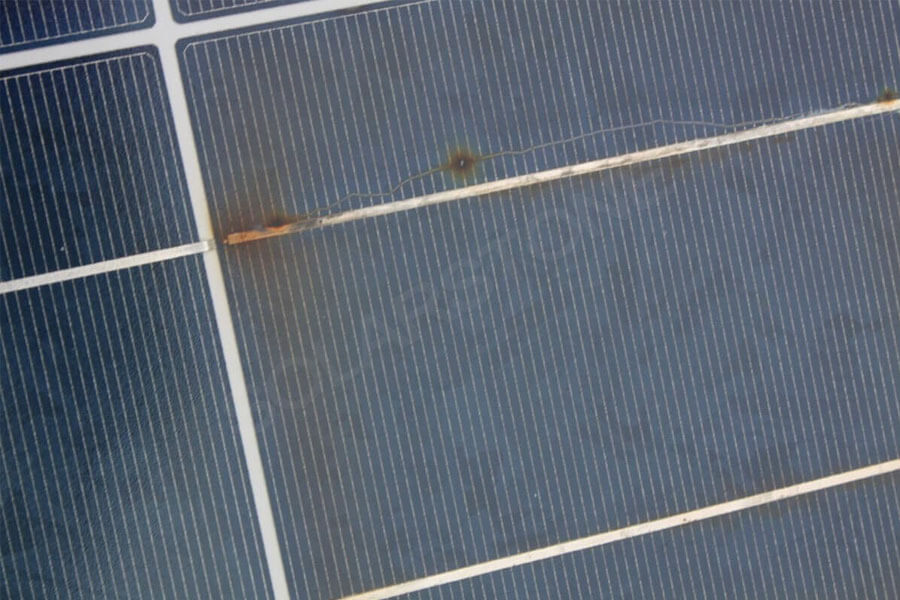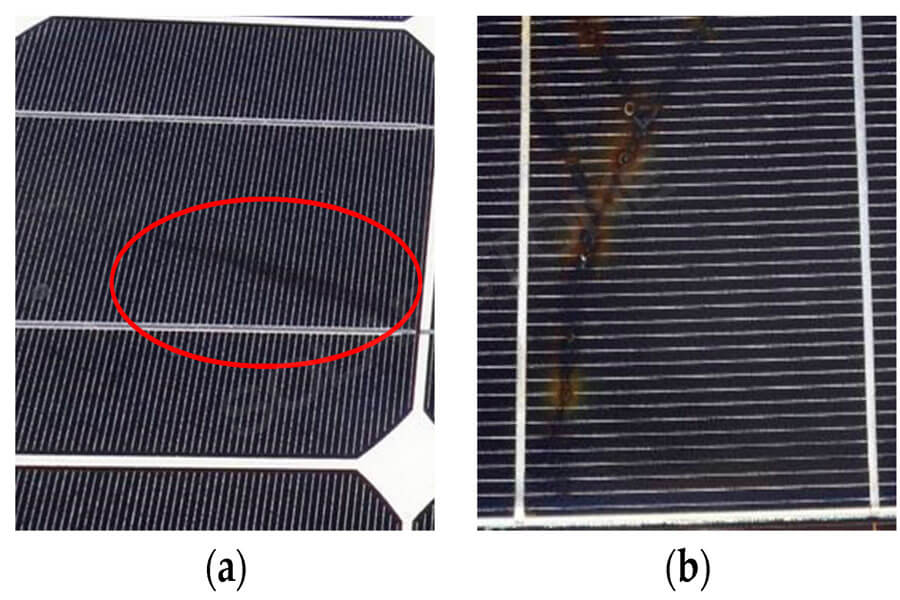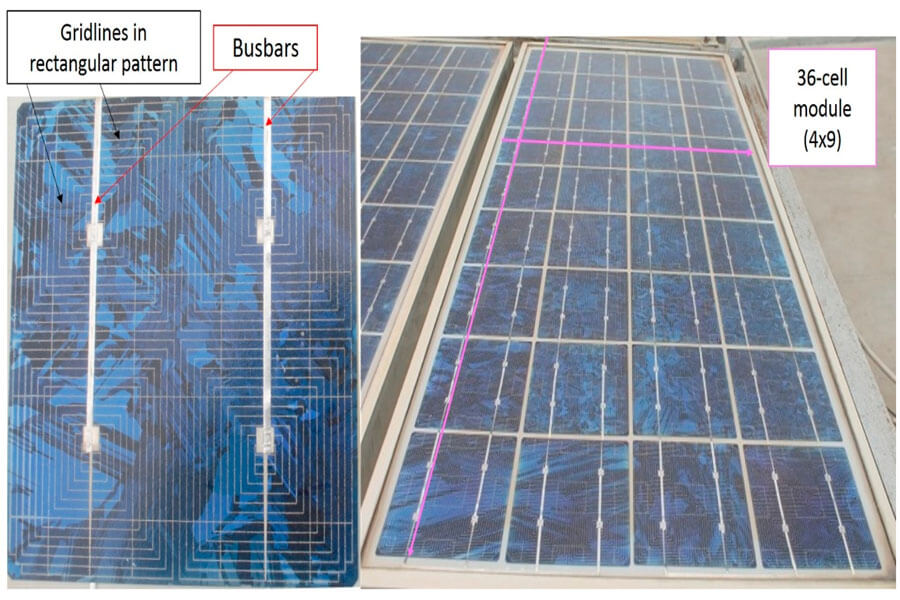The degradation of solar panels is not caused by a single phenomenon, but by several degradation factors affecting photovoltaic modules, but mainly due to the aging of the use time. Other causes of solar panel degradation include aging, light induced degradation (LID), potential induced degradation (PID) and backplane failure.
Aging caused by service time
Aging is the main degradation factor affecting the operating life of PV modules. This degradation is due to the direct consequence of years of exposure of modules to rainfall, snowfall, extreme temperatures, hail, dust and other external factors.
When photovoltaic modules are exposed to the above external factors, they will begin to decay and reduce their efficiency over time. This is due to the corrosion of the solar panel frame, the delamination of glass and backplane and the loss of the performance of photovoltaic materials, all of which lead to the degradation of photovoltaic modules by 0.5% per year on average.
The solar module is under the pressure of heavy objects such as wind, snow, ice and people during outdoor application. If the strength of the solar module fails to meet the requirements, under the pressure of heavy objects, the deformation of the module is too large, which will lead to adverse consequences such as the splitting of the solar cell, the interconnection strip, the electrical connection and the edge sealing, which will reduce the power generation of the solar module.
Photoinduced degradation (LID)
Light induced degradation (LID) is a phenomenon that accelerates the degradation of solar panels, mainly affecting modules in the first year of operation. This is the result of sunlight accelerating the oxidation process between boron and oxygen used for doping photovoltaic materials.
These defects naturally occur when they are combined with molten silicon in the Chaikelaski process for growing single crystal silicon (single crystal c-Si). The boron used for doping solar cells combines with oxygen and acts as a trap for electron hole pairs, affecting the power generation process.
The degradation of solar panels caused by LID has seriously affected the modules made of monocrystalline silicon, especially p-type silicon chip modules. PERC components also have a higher LID effect.
Potentially induced degradation (PID)
Potential induced degradation or PID is another degradation mechanism that affects photovoltaic modules and reduces their efficiency. Unlike LID, PID will not seriously affect specific types of PV modules, but it will affect single crystal c-Si, poly c-Si and thin film PV modules.
The characteristic of large photovoltaic devices is that the voltage of each string is high, which will lead to the potential difference between the battery and the frame, leading to leakage current and power loss.
The understanding of PID is still incomplete and needs further research, but it is well known that it will cause high power loss in ungrounded photovoltaic systems with voltage exceeding 1500V. This is related to the scale of large utilities and commercial photovoltaic systems.
Backplane fault
Backboard failure is another degradation cause, which is the main cause of premature degradation. It is determined that 9% to 16% of PV modules suffer from backplane failures. This is a matter of concern, because the backplane of photovoltaic modules is the first line of defense to isolate and protect the internal components from external factors such as moisture, wind, dust and ultraviolet (UV).
The main reason for the degradation of solar panels due to the failure of the backplane is the delamination of the backplane or the formation of cracks in the materials. When the backplane fails, the internal components of the solar panel are exposed to external factors, and the life of the photovoltaic module is shortened.
Considering the limited service life of solar panels, it is important to note that they can be recycled and reused for grid operation, electric vehicle charging stations and other applications. The better news is that researchers are currently working to extend the service life of photovoltaic modules and develop technologies to reduce further degradation of solar panels. It is believed that the PV module products in the future will be improved in all aspects compared with the models we use now.


